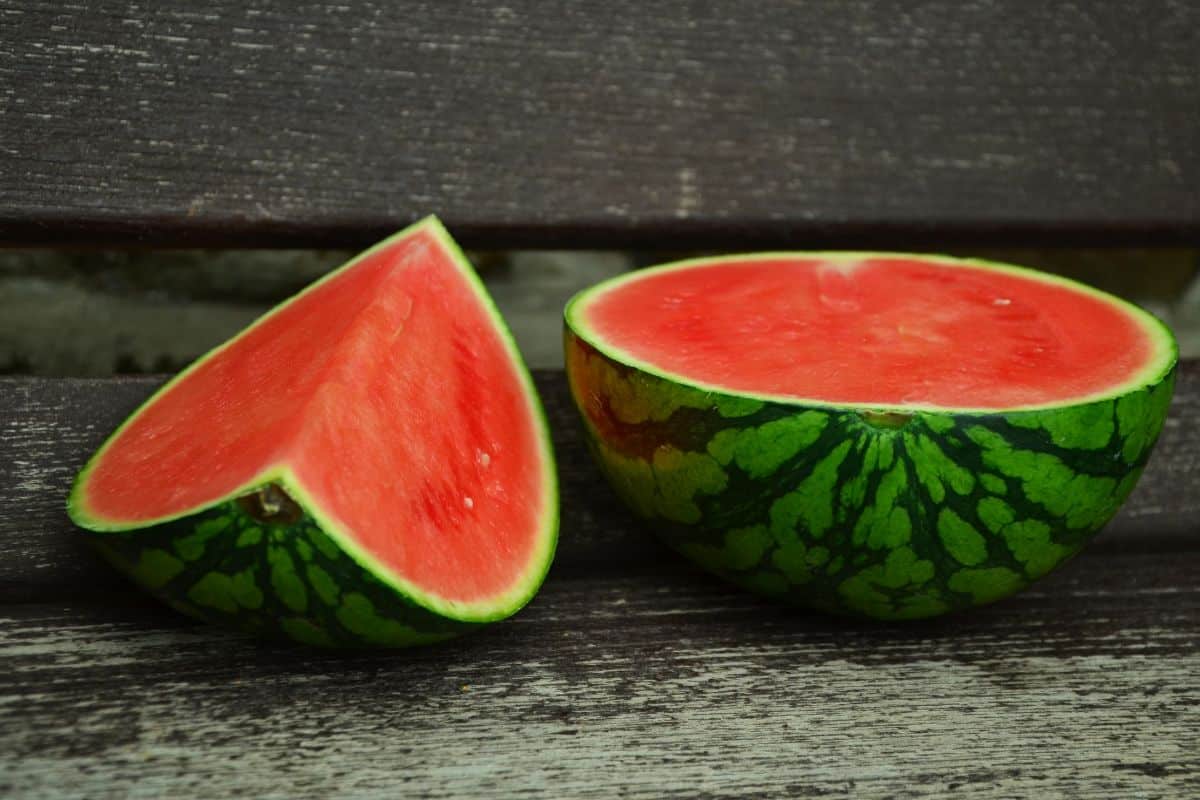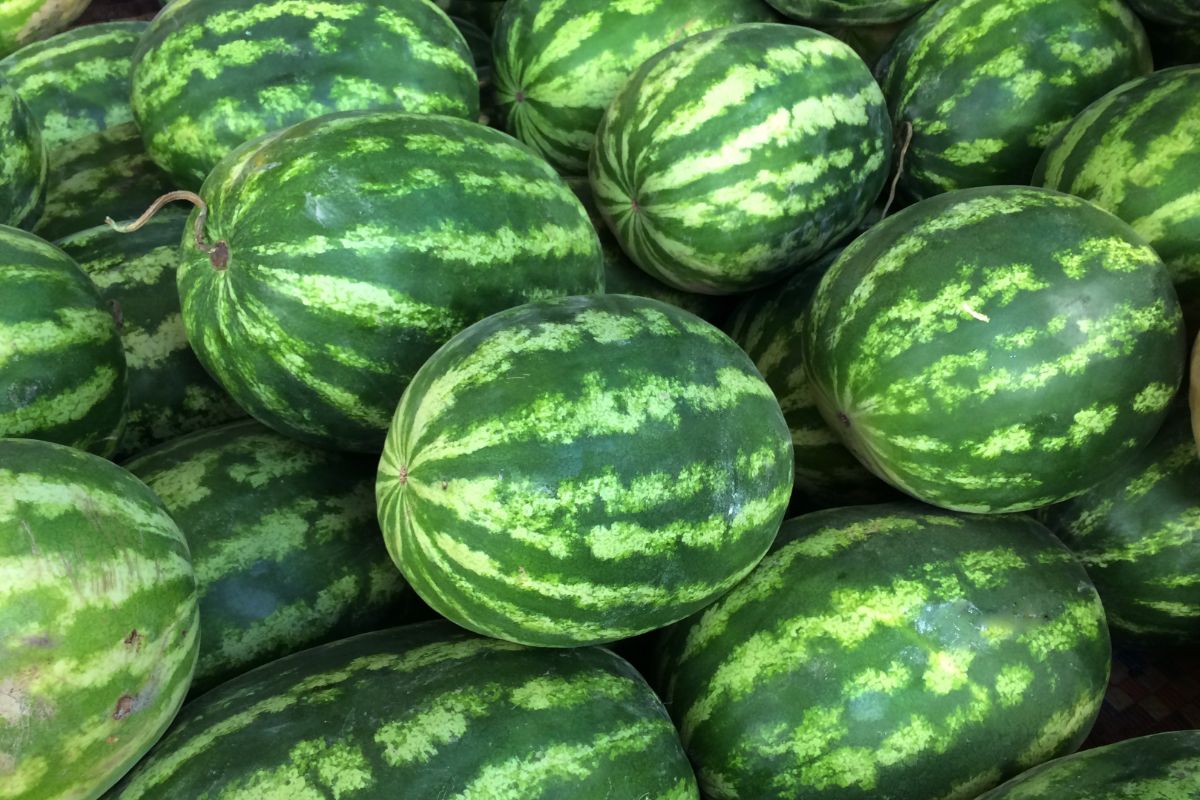Who doesn’t love a hearty slice of fresh watermelon? Full of flavor, a unique look and texture, and might just be one of the most thirst-quenching fruits out there. There’s nothing like it!

However, like many fruits, it’s also pretty susceptible to going to bed and getting moldy very quickly. And no one wants to be eating moldy watermelon, especially if they’re looking to avoid nausea, diarrhea, and stomach bugs!
So, it’s important to recognize just how long you can leave watermelon out before this happens, as well as what water bad watermelon looks like. Not an easy task, especially for something that also has a thick rind to try and deal with half the times that you buy it!
Luckily for you, this guide has you covered. We’ll show you how to check how your watermelon looks and if it needs to be thrown, as well as how long watermelon can last.
Plus, we’ll even share some of our favorite storage tips for you to try out with your brown watermelon, and keep it fresh and edible for just a little longer.
When Watermelon Goes Bad
Many people may be reading this, while also not knowing how exactly to tell whether or not their watermelon goes bad. It’s not always the most common fruit in a fruit bowl or fridge, after all, so many people just don’t see watermelon go bad.
Well, this is where we run into our first problem. See, watermelon is sold both in its whole, skin-covered form, as well as in sliced form, where the inner flesh of the fruit is easy to see.
Because they look so different, you’ll need to know the signs for these different forms of watermelon to know when they do go bad.
Sliced Watermelon
So, we all probably know what a slice of watermelon should look like. A banded green skin, with pink-to-reddish flesh inside, maybe with a couple of seeds thrown in there for good measure. So, what exactly does it look like for a watermelon like this to go bad?
The first sign that you’ll probably notice is the flesh of the watermelon changing. The color of the pulp will start to lighten and fade, turning from red or dark pink into a light shade. You’ll also probably start to notice the flesh starting to pip more.
The spaces around where the pips of a watermelon can be found will start to get bigger, as they both rot and lose precious water content. Perhaps most noticeably, you’ll also notice the taste and feel of the watermelon pulp start to change.
Instead of the fresh, lightly sweet flavor that you’re familiar with, it will taste more watery, or sweet in a strange way, alongside a weirdly slimy texture.
You aren’t likely to get ill from a single or a few small bites (unless you have a sensitive stomach or digestive system), but you’ll probably be able to tell that something is wrong, which is the clue to throw out your watermelon slice.
Whole Watermelon

The trouble with telling when a whole watermelon is going bad is that, as you can imagine, trying to see the flesh of an uncut watermelon isn’t easy! The best way to check, like with sliced watermelon, is to look at the texture and coloration.
The bright green outside will change color as it starts to go bad, usually to a more faded, darker green, or even a blueish turquoise. The skin will also go from a firm, solid texture, to softer in patches, as the flesh underneath starts to rot and go moldy.
If you notice soft, white patches forming on the skin, then you know that mold has started to grow across the fruit. This should be an instant sign that it has gone bad, and thrown out immediately.
How Long Does Watermelon Last?
So, now you should know what your watermelon should look like as it starts to go bad. But how long is that going to take, exactly?
Well, once again, that’s going to vary, depending on how you’re storing your watermelon type of choice. Luckily, refrigeration can be a big help in making it last longer!
Sliced Watermelon
As you can imagine, the exposed flesh of the watermelon slice is very prone to gathering bacteria and mold, meaning that most slices of watermelon don’t have long before they start going bad.
At room temperature, sliced watermelon will usually last only a day or two, even if it is wrapped or otherwise shielded from outside elements.
They really shouldn’t be kept like this in ideal circumstances, if you buy them as sliced watermelons. In a fridge, you can expect them to last a little longer, around 4 to 5 days.
Whole Watermelon
This is a case where the skin of the watermelon comes in handy for preserving the tasty inside. The rind of most watermelons is so thick, that it is very difficult for foreign or outside bacteria to get inside to rot the watermelon.
Generally speaking, you can expect a whole watermelon to stay more or less fresh for at least a week at room temperature, with it potentially reaching up to 10, 11, or even 12 days if you’re in a generally cool and dry room. What about in the fridge?
Well, unless you’ve got an absurdly large fridge, it’s unlikely that you’re going to be able to fit your large, head-sized watermelon on a fridge shelf! However, if you do manage to find the space, you might be able to get up to 2 weeks out of a whole watermelon!
Storing Watermelon
When it comes to keeping your watermelon edible and good for longer, storage is something that you need to consider.
Keeping your watermelon in the right condition is often the difference between a slice going bad at 2 days, or it stays fresh and tasty up to 5 days after buying it!
Sliced Watermelon
Make sure that, after opening a watermelon up, you wrap any unused pieces in cling film, then place them in a refrigerated or cold area. Alternatively, an airtight container will also do the trick.
Whole Watermelon
In this instance, you already have a pretty effective barrier to stopping the outside from ruining your watermelon: the skin! So, it’s simply a matter of keeping the watermelon cool or cold, and using it before it starts to go bad!
Final Notes
So, there you have it! Your watermelon will be able to stay fresher and for longer now, after reading our guide!






